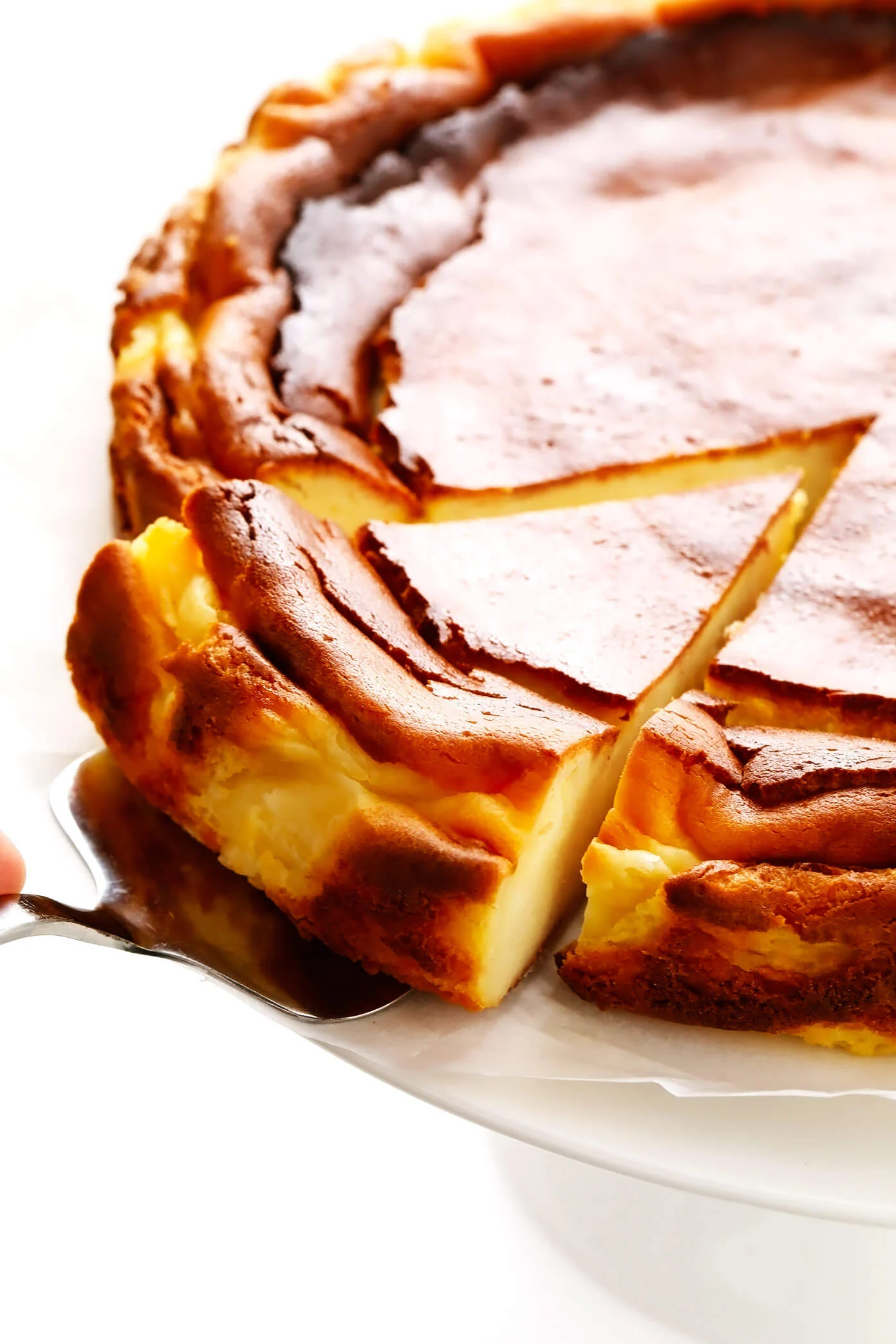Spanish desserts are a delightful part of the country’s rich culinary tradition. From creamy custards to flaky pastries, these sweet treats offer a taste of Spain’s diverse flavors and cultural influences.
You’ll find a mix of simple and complex recipes, each with its own unique charm and history.
Exploring 25 Spanish desserts will give you a comprehensive look at the country’s sweet side. These desserts range from well-known favorites like churros and flan to regional specialties you might not have heard of before.
Many of these treats are enjoyed during holidays or special occasions, while others are everyday indulgences.
Get ready to discover new flavors and perhaps find your next favorite dessert.
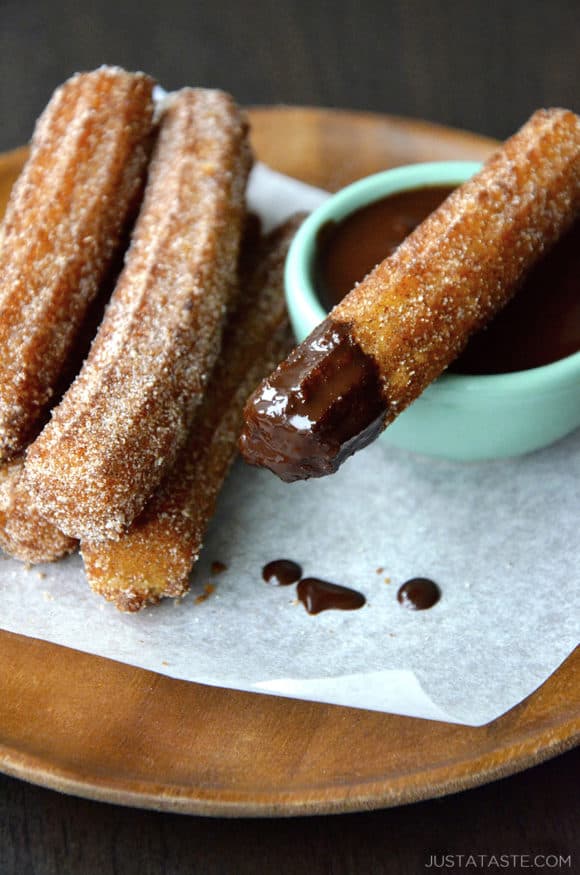
1. Churros with Chocolate
Churros with chocolate is a beloved Spanish dessert. You’ll find crispy, fried dough sticks paired with rich hot chocolate for dipping.
To make churros, you mix water, oil, and salt in a pan. Then add flour to create a dough.
Pipe the dough into hot oil and fry until golden.
For the chocolate sauce, melt chocolate with milk. Add a bit of cornstarch to thicken it up. The result is a smooth, velvety dip.
Serve the churros warm with the hot chocolate on the side. Dunk each churro into the chocolate for a perfect sweet bite. It’s a tasty treat you can enjoy any time of day in Spain.
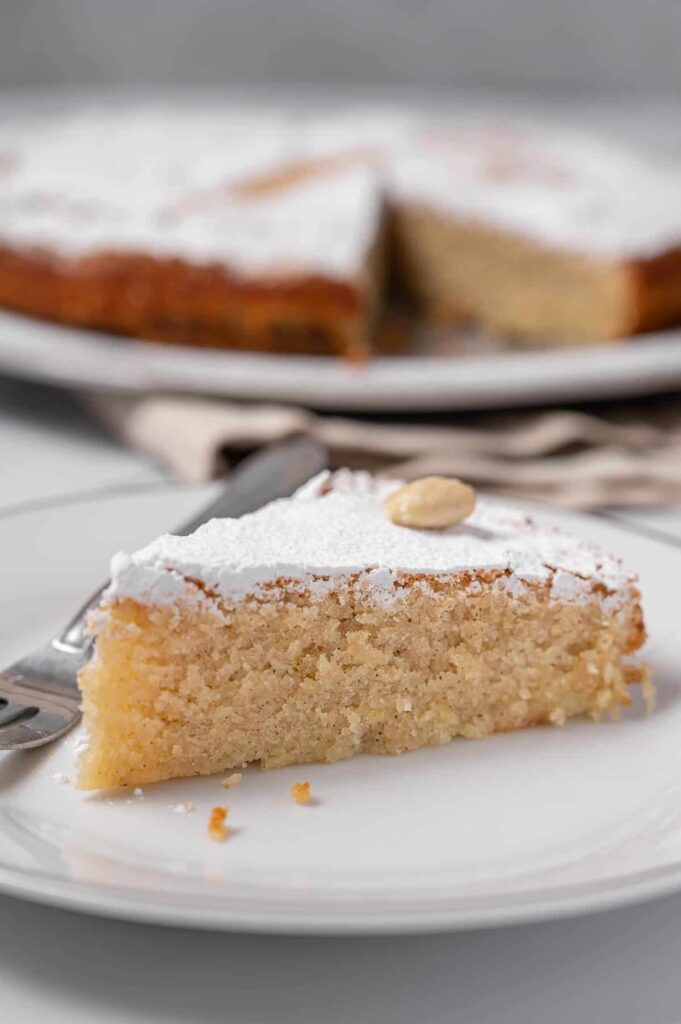
2. Tarta de Santiago
Tarta de Santiago is a famous Spanish almond cake from Galicia. You’ll love its rich, nutty flavor and moist texture.
To make it, grind almonds finely and mix with eggs, sugar, lemon zest, and cinnamon.
Pour the batter into a round cake pan and bake until golden brown.
Once cooled, dust the cake with powdered sugar. A traditional Santiago cross stencil is often used to create a decorative pattern on top.
This gluten-free treat pairs well with coffee or sweet wine. It’s a perfect dessert for almond lovers and those looking to try authentic Spanish sweets.
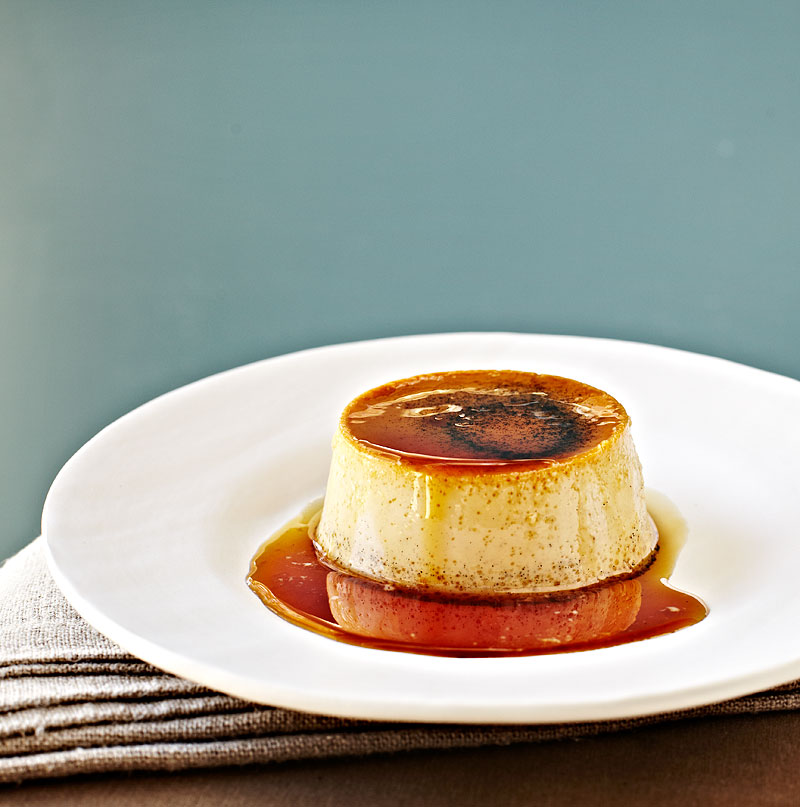
3. Flan de Leche
Flan de Leche is a classic Spanish dessert that will make your taste buds dance. This creamy custard is topped with a rich caramel sauce that melts in your mouth.
To make flan, you’ll need eggs, milk, sugar, and vanilla. First, melt sugar to create a golden caramel. Pour it into a baking dish or ramekins.
Mix the eggs, milk, and vanilla to make the custard. Pour this mixture over the caramel.
Bake the flan in a water bath at 350°F (175°C) for about 1 hour.
Once cooled, flip the flan onto a plate. The caramel will drizzle down the sides, creating a beautiful and delicious dessert. Enjoy your homemade flan de leche!
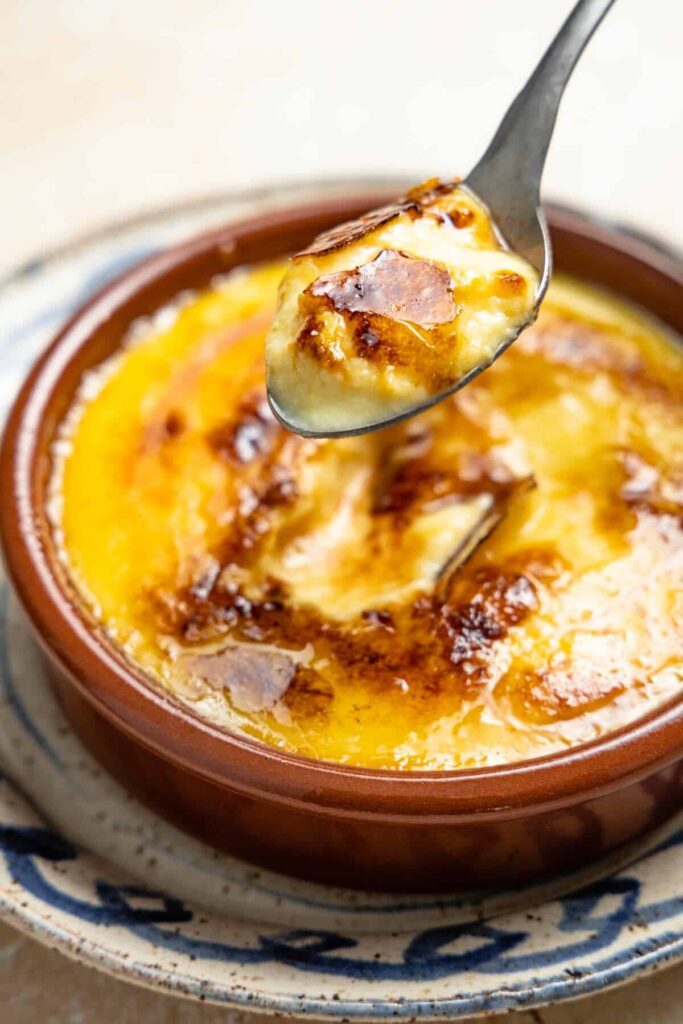
4. Crema Catalana
Crema Catalana is a famous Spanish dessert that’s similar to crème brûlée. It’s a creamy custard with a crispy caramelized sugar top.
To make it, you’ll need milk, egg yolks, sugar, cornstarch, cinnamon, and lemon or orange peel. Mix these ingredients and cook them until the custard thickens.
Pour the mixture into small dishes and chill for several hours. Before serving, sprinkle sugar on top and use a blowtorch to caramelize it.
The result is a delicious dessert with a smooth, cool custard and a warm, crunchy top layer. It’s a perfect treat for any occasion.
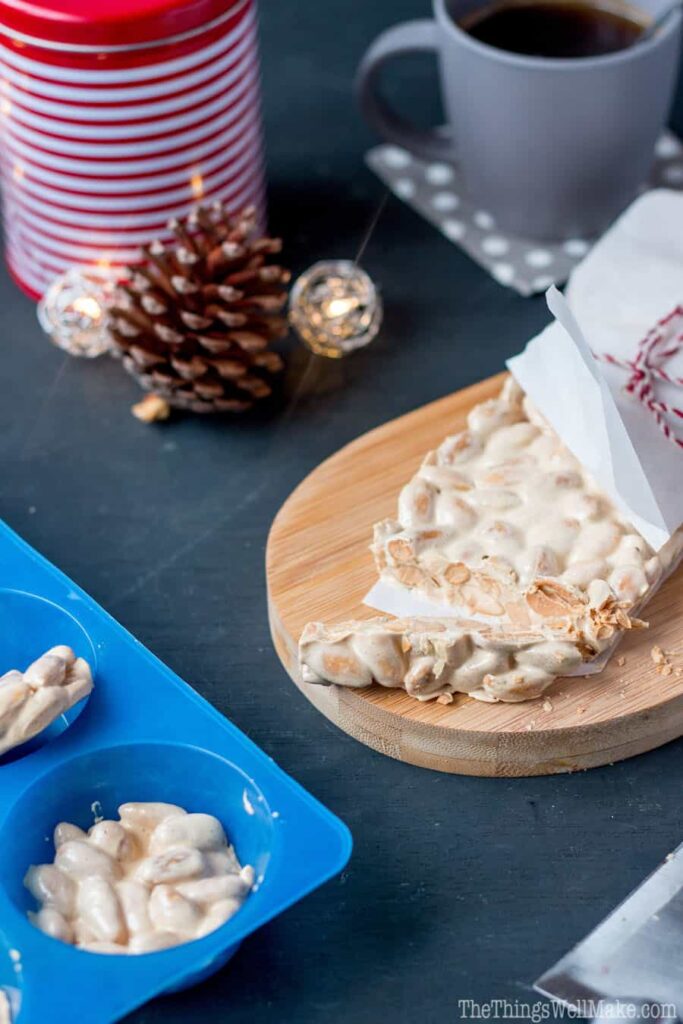
5. Turrón de Alicante
Turrón de Alicante is a classic Spanish Christmas treat. You’ll love this hard nougat made with honey, sugar, egg whites, and almonds.
This dessert has a crunchy, brittle texture that sets it apart from its softer cousin, Turrón de Jijona. The almonds give it a satisfying crunch and nutty flavor.
You can find Turrón de Alicante in stores during the holiday season. It often comes in rectangular bars wrapped in colorful packaging. Try breaking off a piece to enjoy with coffee or as an after-dinner sweet.
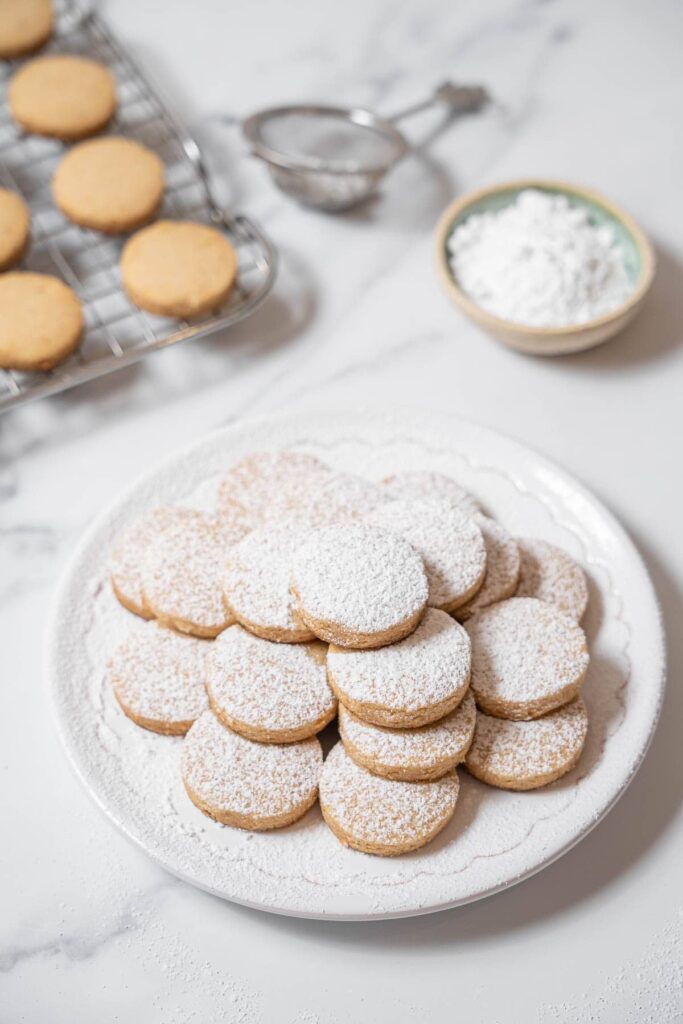
6. Polvorones
Polvorones are beloved Spanish Christmas cookies. These crumbly treats melt in your mouth with a delightful almond flavor.
You’ll find polvorones in bright wrappings at supermarkets during the holiday season. They’re also a staple in pastry shop windows alongside other festive sweets.
The name “polvorones” comes from “polvo,” meaning powder or dust in Spanish. This refers to their powdery texture when eaten.
Many recipes dust polvorones with powdered sugar for extra sweetness. Traditional versions use almonds, but you can find lemon-flavored varieties too.
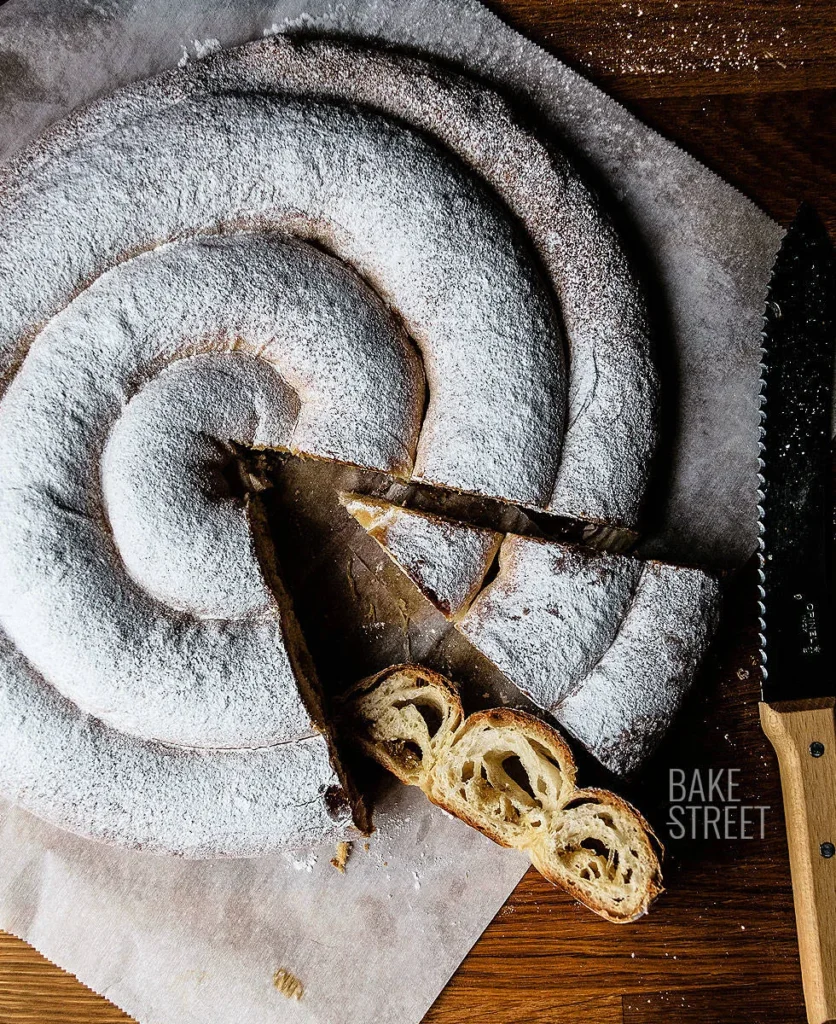
7. Ensaimada
Ensaimada is a sweet pastry from Mallorca, Spain. It’s known for its spiral shape and light, fluffy texture.
You’ll find ensaimadas made with flour, water, sugar, eggs, and yeast. Bakers knead the dough until it’s smooth and elastic.
After rising, the dough is rolled out thin and spread with lard. It’s then rolled up and shaped into a coil.
Ensaimadas bake until golden brown. Once cooled, they’re dusted with powdered sugar. Some versions include fillings like cream or sobrassada.
You can enjoy ensaimada as a breakfast treat or snack. It pairs well with coffee or hot chocolate.
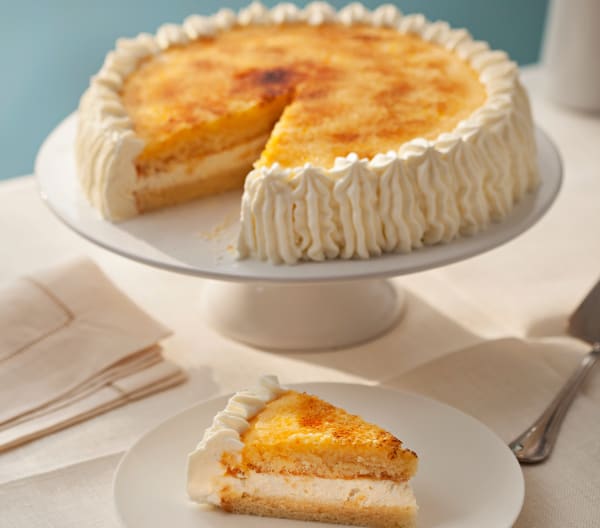
8. Tarta de San Marcos
Tarta de San Marcos is a beloved Spanish dessert with a rich history dating back nearly a thousand years. This cake originated in León and has become a popular choice for birthdays and celebrations across Spain.
The cake features layers of sponge cake soaked in syrup, filled with chocolate truffle cream, and covered in toasted egg yolk frosting. Sliced almonds decorate the sides, adding a nutty crunch.
To make Tarta de San Marcos, you’ll start by baking a light sponge cake. Next, you’ll prepare the chocolate truffle filling and egg yolk frosting.
Assemble the cake by layering the sponge with syrup and filling, then coat it with the golden frosting.
This dessert combines different textures and flavors, creating a truly indulgent treat. Its elegant appearance and delicious taste make it a standout among Spanish sweets.
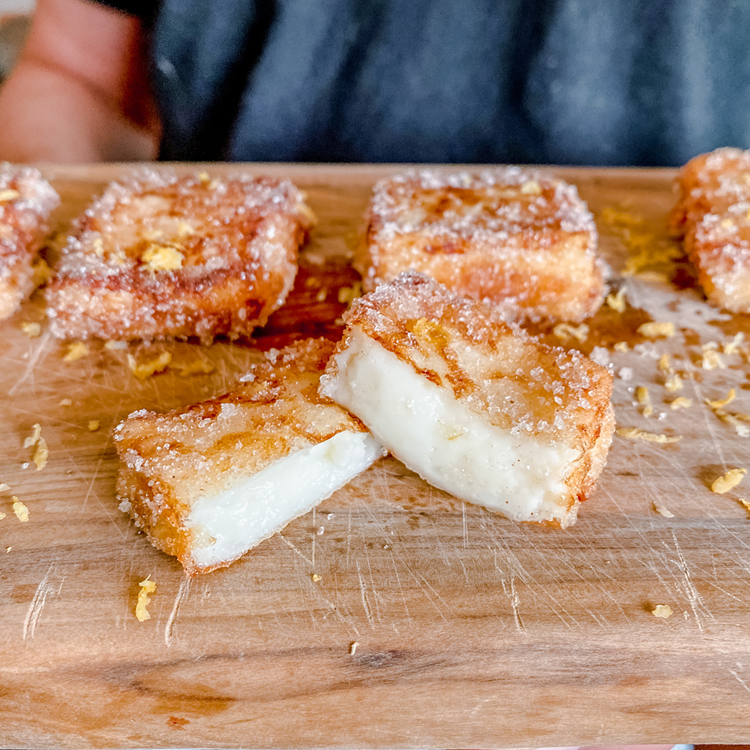
9. Leche Frita
Leche frita, or “fried milk,” is a unique Spanish dessert you’ll love. It’s made by cooking milk with sugar, cinnamon, and lemon peel until thick.
The mixture is then cooled, cut into squares, coated in flour and egg, and fried until golden. The result is a crispy exterior with a creamy, custard-like center.
You can serve leche frita warm or cold. It’s often dusted with cinnamon sugar for extra flavor. This dessert is popular in northern Spain, especially in regions like Castilla y León.
Try making leche frita at home for a tasty treat. It’s a fun way to experience Spanish cuisine and impress your friends with an unusual dessert.
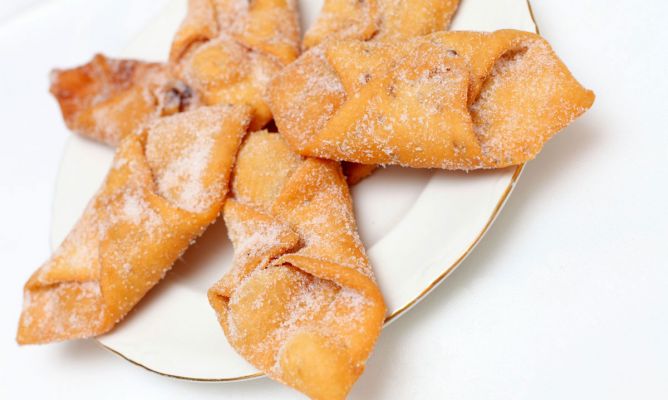
10. Pestiños
Pestiños are a traditional Spanish dessert often enjoyed during holidays. These sweet fritters are made from simple ingredients like flour, olive oil, and spices.
To make pestiños, you’ll form small strips of dough and fry them until golden brown. The crispy treats are then coated with honey or sugar for extra sweetness.
Pestiños have a distinct flavor thanks to the addition of sesame seeds and anise. Some regions call them borrachuelos and may include wine in the dough.
You can find these delightful pastries throughout Spain, especially during Christmas and Easter celebrations. Their crunchy texture and sweet taste make them a popular choice for dessert or as a snack with coffee.
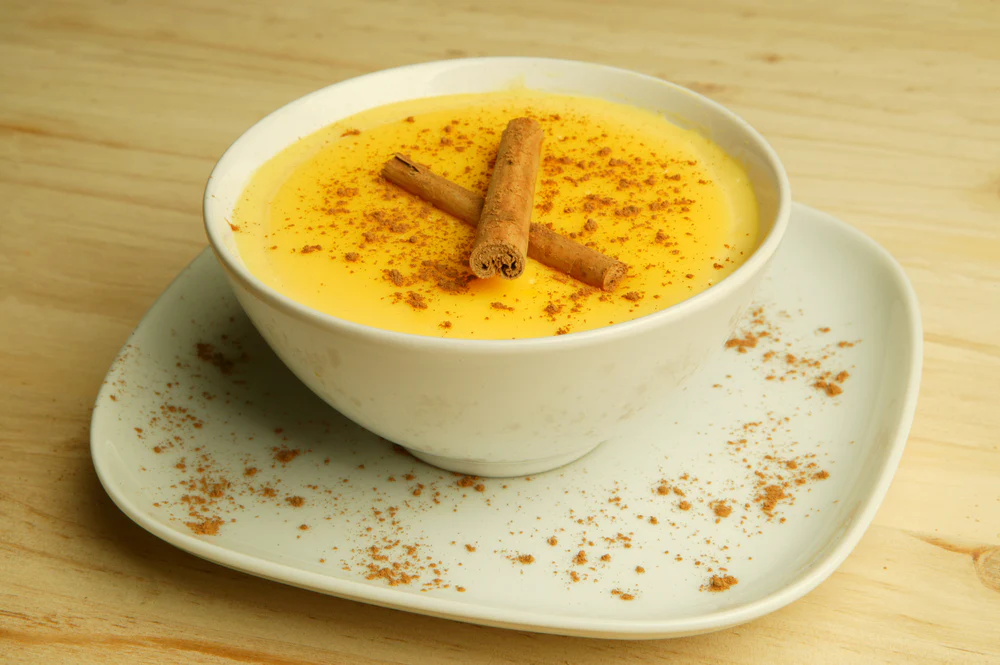
11. Natillas
Natillas is a beloved Spanish custard dessert. You’ll find it’s creamy, sweet, and comforting.
This simple treat is made with milk, eggs, sugar, and cornstarch.
To make natillas, you heat milk with cinnamon and lemon peel. Then you mix egg yolks, sugar, and cornstarch. You combine these mixtures carefully to create a smooth custard.
The dessert is often flavored with vanilla or cinnamon. It’s typically served chilled in small cups or bowls. You might see it topped with a sprinkle of ground cinnamon or a cinnamon stick for extra flavor.
Natillas is a popular homemade dessert in Spain. It’s also common in cafes and restaurants. You’ll enjoy its silky texture and rich taste.
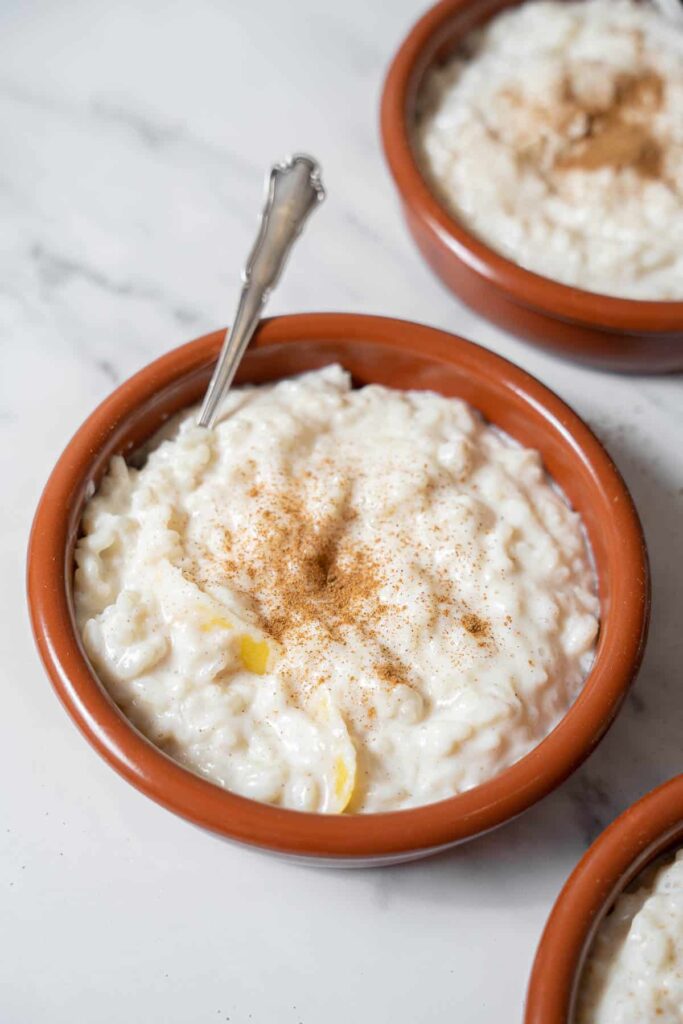
12. Arroz con Leche
Arroz con Leche is a beloved Spanish rice pudding dessert. You’ll love its creamy texture and warm, comforting flavors.
To make it, you cook short-grain rice in water with cinnamon and lemon peel. Then you add milk slowly, stirring as it absorbs.
Sugar sweetens the dish, while condensed milk adds richness. Some recipes include orange peel or cloves for extra flavor.
You can serve Arroz con Leche warm or cold. It’s often sprinkled with cinnamon on top for a pretty finish.
This simple dessert is popular across Spain and Latin America. Each region may have its own small variations on the recipe.
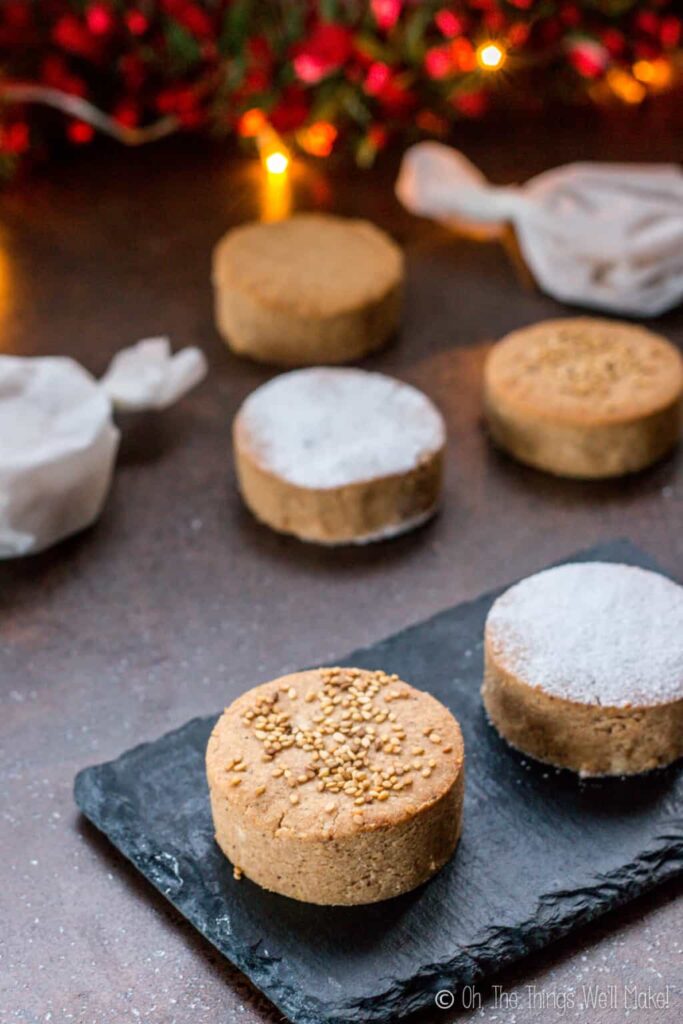
13. Mantecados
Mantecados are traditional Spanish shortbread cookies popular during Christmas. These sweet treats originate from Andalusia but are now enjoyed throughout Spain during the holiday season.
To make mantecados, you’ll need lard or vegetable shortening, powdered sugar, flour, and flavorings like lemon zest or cinnamon. Mix the ingredients, shape the dough into small rounds, and bake until golden.
The cookies have a crumbly texture that melts in your mouth. Their name comes from “manteca,” meaning lard, a key ingredient. You can find mantecados dusted with powdered sugar or cinnamon for extra flavor.
Try making these delicious Spanish cookies at home for a taste of authentic holiday tradition. They pair perfectly with a cup of hot chocolate or coffee.
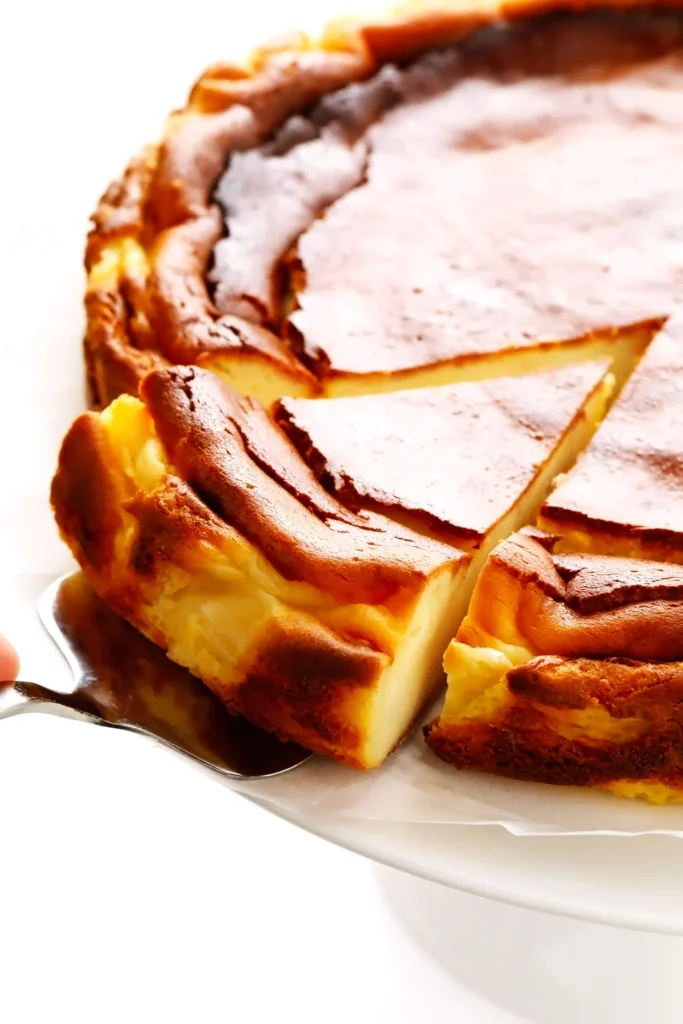
14. Tarta de Queso
Tarta de Queso is Spain’s take on cheesecake. This dessert hails from the Basque region in northern Spain. It’s also known as Basque Cheesecake or Burnt Cheesecake.
Unlike traditional cheesecakes, Tarta de Queso has no crust. It’s baked at a high temperature, giving it a dark, caramelized top. The inside stays creamy and rich.
The recipe is simple. You’ll need cream cheese, eggs, sugar, flour, and heavy cream. Some bakers add extras like vanilla or lemon zest for more flavor.
You can find Tarta de Queso in many Spanish restaurants. It’s become popular worldwide for its unique taste and looks.

15. Piononos
Piononos are small, sweet pastries from Spain. They’re named after Pope Pius IX and originated in Santa Fe, Granada. These treats are made of thin sponge cake rolled into a cylinder shape.
The cake is soaked in syrup and filled with cream. On top, you’ll find a layer of toasted cream. Piononos are usually about two inches tall and meant to be eaten in one or two bites.
While traditionally sweet, savory versions have become popular in some Latin American countries. These might include ingredients like ham, cheese, or vegetables.
You can enjoy piononos as a dessert or with coffee. They’re often served at celebrations and holidays in Spain and beyond.
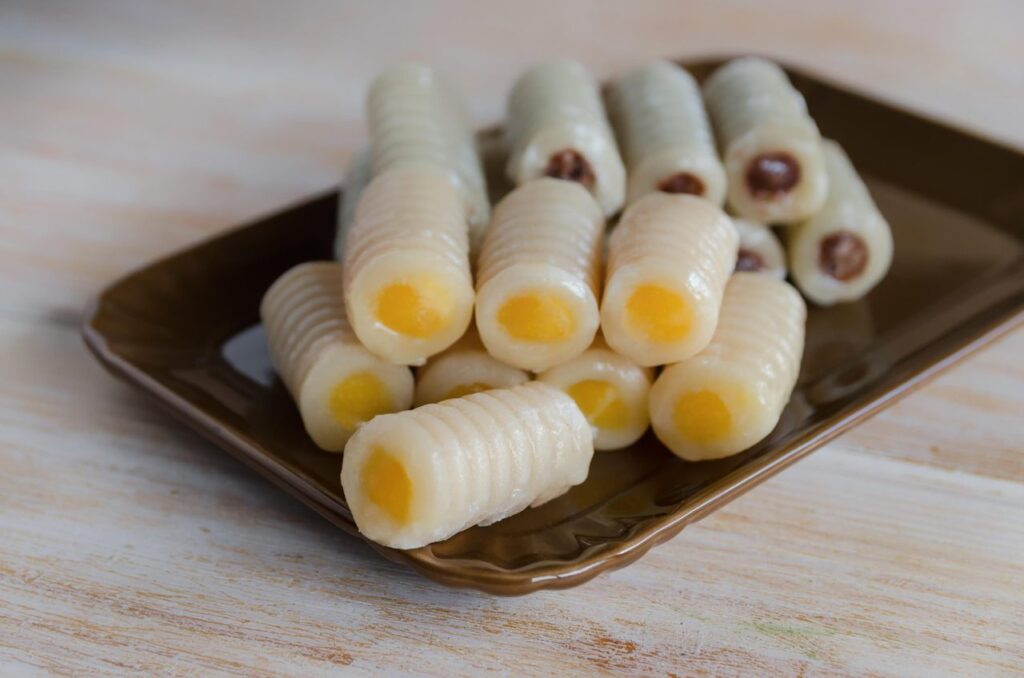
16. Huesos de Santo
Huesos de Santo are a beloved Spanish dessert traditionally enjoyed on All Saints’ Day. These sweet treats resemble small bones, hence their name which means “saint’s bones” in English.
The main ingredient is marzipan, rolled into thin cylinders. You fill these delicate tubes with a creamy egg yolk custard. Some recipes add a touch of cinnamon or lemon zest for extra flavor.
To make Huesos de Santo, you first prepare a sugar syrup and mix it with ground almonds to form the marzipan. You then shape the marzipan into small rolls and fill them with the custard.
This dessert dates back to the 17th century and originated in Madrid. Today, you can find Huesos de Santo throughout Spain, especially during autumn celebrations.
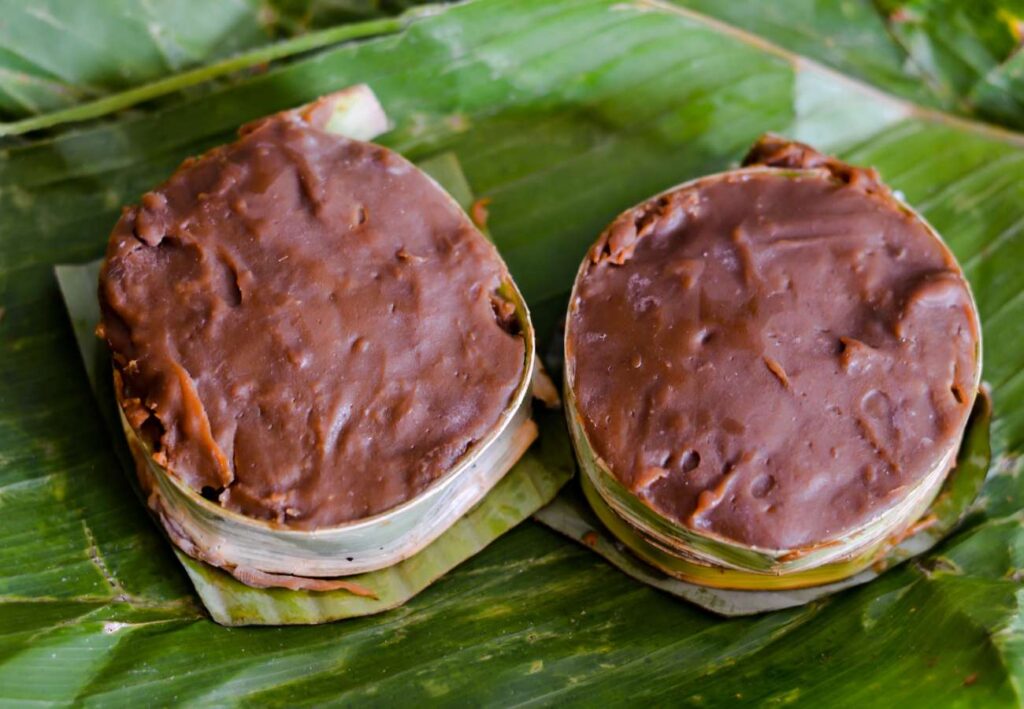
17. Bienmesabe
Bienmesabe is a sweet treat from the Canary Islands. Its name means “tastes good to me” in Spanish. This dessert is made with simple ingredients like almonds, honey, and egg yolks.
You’ll find cinnamon and lemon zest added for extra flavor. The mixture is cooked until it forms a thick, creamy paste.
Bienmesabe is often served with ice cream or as a topping for cakes. You can also enjoy it on its own as a rich, indulgent dessert.
Some versions of bienmesabe use coconut instead of almonds. This tropical twist is popular in Venezuela and other parts of South America.
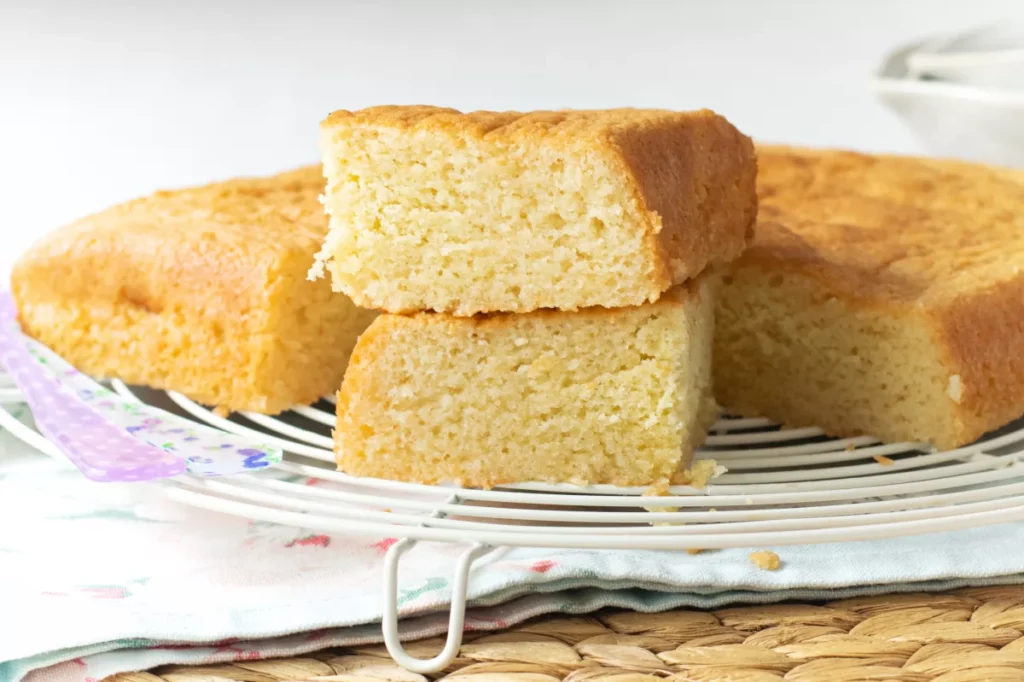
18. Bizcochos Borrachos
Bizcochos Borrachos are a sweet treat from Spain that will make your taste buds happy. These “drunken sponge cakes” get their name from the boozy syrup they’re soaked in.
The soft, fluffy cakes are made with eggs, sugar, and flour. After baking, they’re drenched in a syrup made with brandy or rum, sugar, lemon, and cinnamon.
You can enjoy these tasty cakes as a light dessert after a Spanish meal. They also go great with a cup of hot coffee or chocolate on a chilly morning.
Bizcochos Borrachos are popular in regions like Castilla la Mancha and Castilla y León. They’re a yummy way to end your day or start your morning with a little Spanish flair.
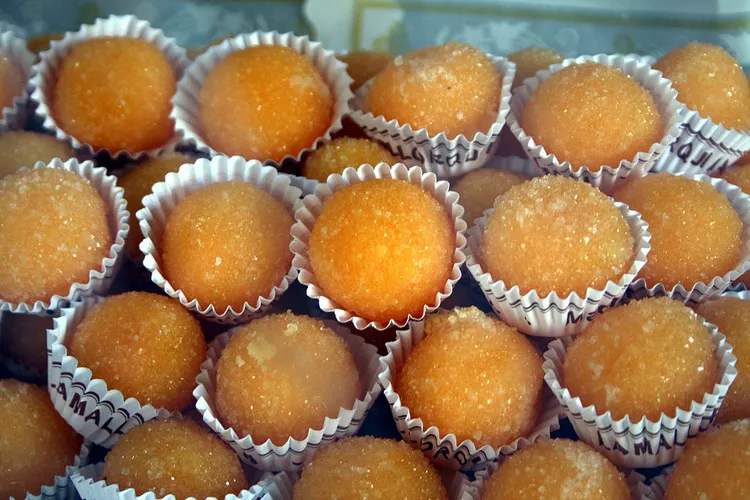
19. Yemas de Santa Teresa
Yemas de Santa Teresa are sweet, creamy treats from Spain. They’re made with egg yolks and sugar syrup. The name means “egg yolks of Saint Teresa” in English.
To make these desserts, you beat egg yolks and mix them with hot sugar syrup. You cook this mixture on low heat, stirring constantly. The yolks thicken and form a soft, smooth paste.
Once cooled, you shape the paste into small balls. Then you roll them in powdered sugar. The result is a rich, sweet confection with a soft texture.
Yemas de Santa Teresa are often enjoyed during holidays and special occasions in Spain. You can find them in bakeries or make them at home for a tasty treat.
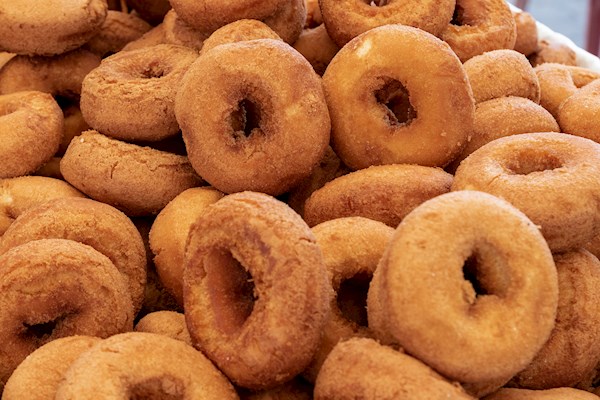
20. Rosquillas
Rosquillas are delightful Spanish doughnuts that bring a sweet touch to any occasion. These ring-shaped treats have a crispy exterior and a fluffy interior, making them irresistible.
You can enjoy rosquillas plain or coated with sugar and cinnamon. Some recipes include lemon zest for a citrusy twist.
They’re often eaten during Easter, but you can find them year-round in many Spanish bakeries.
To make rosquillas at home, you’ll need flour, sugar, eggs, butter, and baking powder. Mix the ingredients, shape the dough into rings, and fry them until golden.
The result is a tasty snack perfect with coffee or as a dessert.
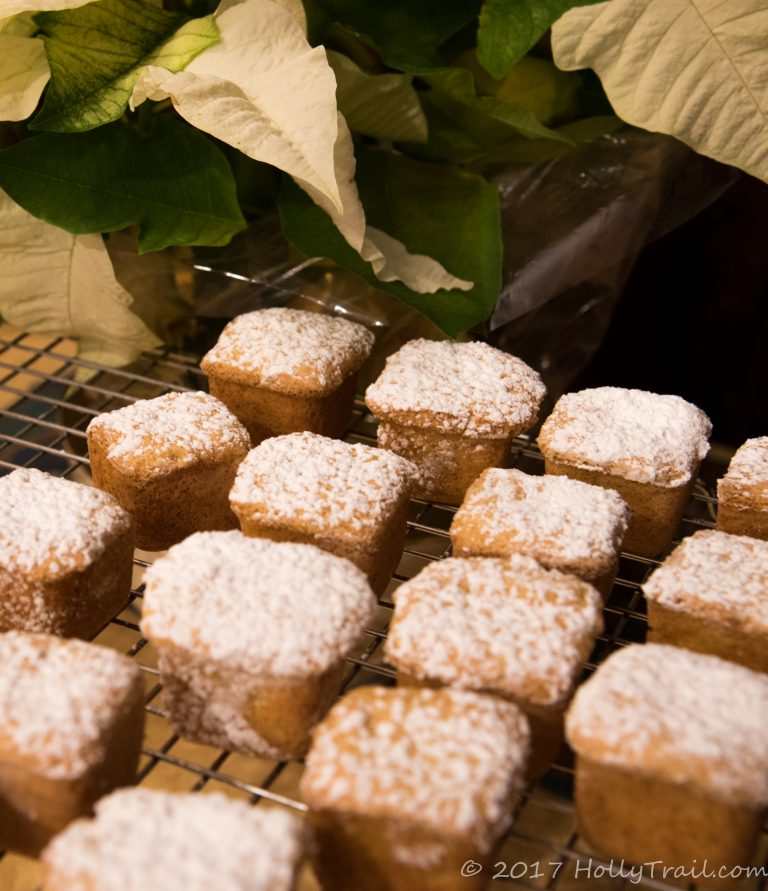
21. Marquesas
Marquesas are delightful gluten-free Spanish cakes that come in individual servings. These treats are typically square-shaped, making them perfect for brownie pans.
If you don’t have a brownie pan, a cupcake tin works well too. Marquesas stand out because they’re naturally gluten-free, not a modified recipe.
These cakes offer a unique taste and texture that sets them apart from other desserts. You’ll find they’re a great option for those with gluten sensitivities or anyone looking to try something new.
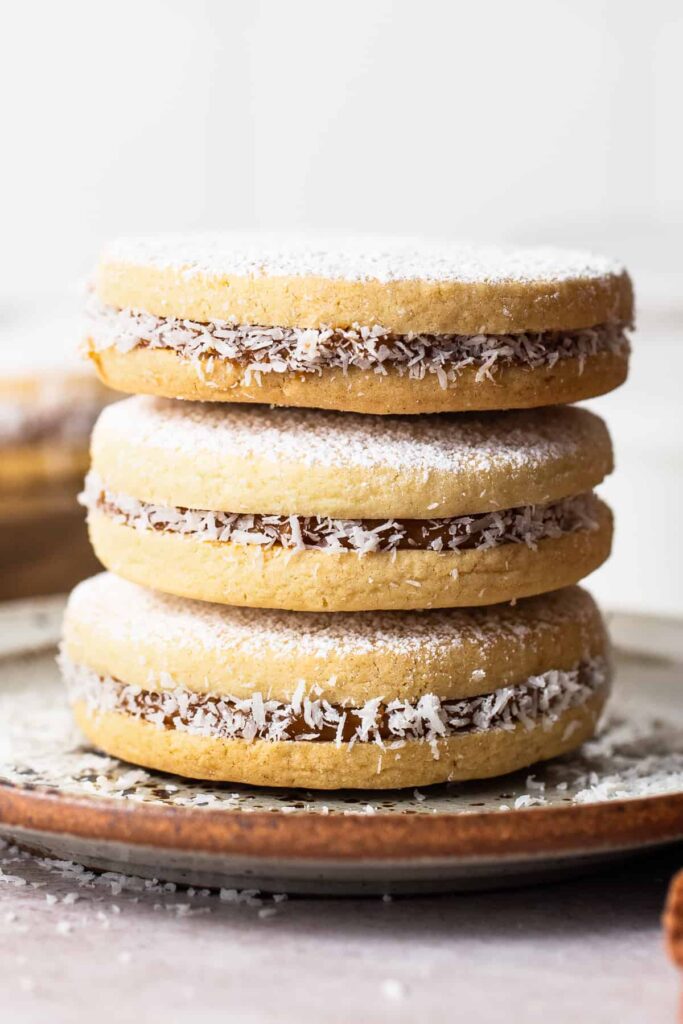
22. Alfajores
Alfajores are beloved Spanish sandwich cookies that will melt in your mouth. These sweet treats consist of two delicate shortbread-like cookies with a creamy dulce de leche filling.
To make alfajores, you’ll need flour, cornstarch, butter, sugar, and egg yolks for the cookies. Mix the ingredients and roll out the dough.
Cut into small circles and bake until golden.
Once cooled, spread a generous amount of dulce de leche between two cookies. You can coat the edges in shredded coconut or powdered sugar for extra flair.
Alfajores are perfect with coffee or tea. Their rich, buttery flavor and smooth caramel filling make them a favorite at gatherings and holidays.
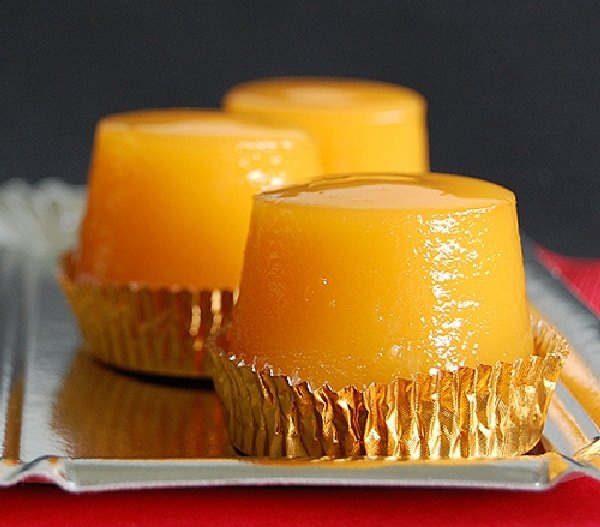
23. Tocino de Cielo
Tocino de cielo is a heavenly Spanish dessert with a surprising name. It means “heaven’s bacon” in English, but don’t worry – there’s no bacon involved!
This sweet treat dates back to the 1300s in Jerez, Spain. It came about when winemakers had leftover egg yolks after using whites to clarify wine.
The dessert is similar to crème caramel, but with a richer taste. It’s made from egg yolks, sugar, and water.
The result is a smooth, creamy custard with a golden hue.
You’ll often find tocino de cielo served in small portions. It’s very sweet, so a little goes a long way.
The top is usually coated with a thin layer of caramel for extra flavor.
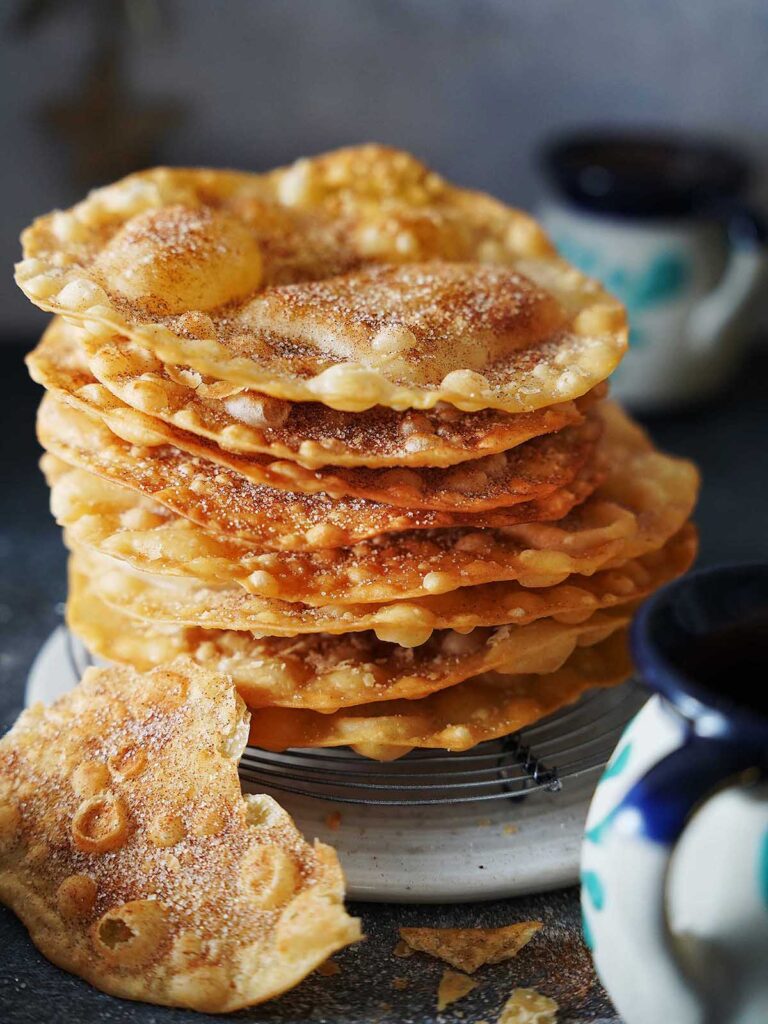
24. Buñuelos
Buñuelos are a beloved Spanish dessert that will satisfy your sweet tooth. These crispy fried dough treats are perfect for special occasions or as a tasty snack.
To make buñuelos, you’ll need simple ingredients like flour, baking powder, milk, eggs, and butter. The dough is flavored with lemon zest for a hint of citrus.
After frying the dough until golden brown, you dust the buñuelos with cinnamon sugar or powdered sugar. Some versions are filled with pastry cream or fruit preserves for extra indulgence.
You can enjoy buñuelos plain or dip them in hot chocolate for a classic Spanish treat.
They’re especially popular during Christmas celebrations but can be savored year-round.

25. Neules
Neules are thin, crispy wafer rolls that originate from Catalonia, Spain. You’ll often find these delicate treats served during Christmas time.
To make neules, you’ll need a special iron or pizzelle maker. The batter includes simple ingredients like flour, sugar, eggs, and vanilla extract.
Once cooked, you quickly roll the thin wafer into a cigar shape while it’s still hot. This gives neules their distinctive cylindrical form.
You can enjoy neules on their own as a light, sweet snack. They also pair well with ice cream or hot chocolate for a more indulgent dessert experience.
Origins of Spanish Desserts
Spanish desserts have deep roots in history and culture. They blend flavors from different parts of the world with local ingredients and traditions.
Regional differences across Spain have also shaped unique sweets in each area.
Influences from Across the Globe
Spanish desserts show traces of many cultures. The Moors brought almonds, citrus, and spices during their 700-year rule. This led to treats like turrón, a nougat made with almonds and honey.
The Americas gave Spain chocolate, vanilla, and new fruits. These became key ingredients in flan and churros con chocolate.
European neighbors also left their mark. French pastry techniques influenced Spanish bakeries. Italian gelato inspired Spanish ice cream traditions. Even the ancient Romans contributed, with wheat-based desserts evolving into modern cakes and pastries.
Regional Variations
Spain’s diverse geography created distinct dessert styles across regions. In the north, dairy-rich areas make creamy rice puddings and cheesecakes. Coastal regions use local citrus in sweets like Catalan cream.
The central plains favor hearty desserts with eggs and almonds, like the Saint James cake.
Andalusia in the south makes honey-soaked pastries, showing its Moorish past. The Balearic Islands have unique treats like ensaïmadas, spiral pastries dusted with powdered sugar.
Each area puts its spin on classics too. You’ll find different versions of flan or churros as you travel through Spain.
Key Ingredients in Spanish Desserts
Spanish desserts use distinct ingredients that give them their unique flavors. Fresh produce, aromatic spices, and nuts are staples in many sweet treats from Spain.
Traditional Spices and Flavors
Cinnamon is a key spice in Spanish desserts. You’ll find it in churros, rice pudding, and many pastries.
Vanilla adds depth to custards and cakes. Lemon zest brings brightness to cookies and tarts.
Almond extract gives a nutty flavor to many sweets. Orange blossom water adds a floral note to some treats.
Honey is used to sweeten desserts naturally.
Chocolate is popular in Spanish desserts too. You’ll see it as a dipping sauce for churros or as a rich cake filling.
Use of Fresh Fruits and Nuts
Oranges are common in Spanish sweets. You’ll find them in cakes, tarts, and candied as a topping.
Apples appear in pies and pastries. Figs and dates show up in holiday desserts.
Almonds are very important. They’re in cakes, cookies, and nougat.
Pine nuts add crunch to some treats. Walnuts feature in special holiday sweets.
Fresh fruit often tops tarts or is baked into cakes. Peaches, pears, and cherries are favorites.
Some desserts use dried fruits too, like raisins or apricots.
